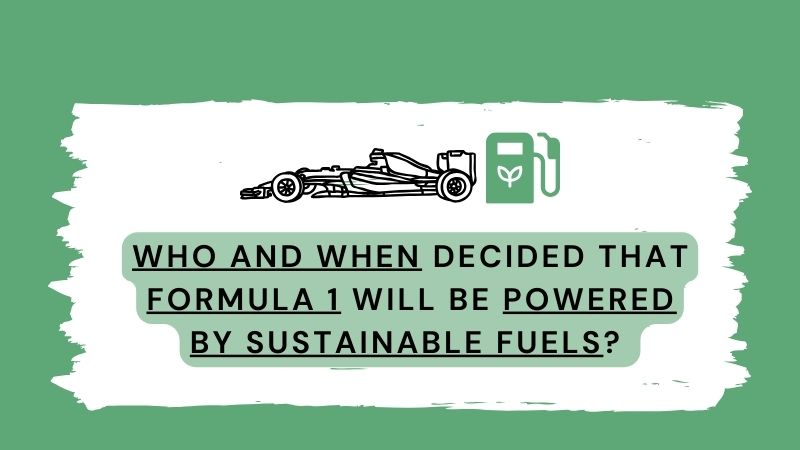As of today, it’s clear where the Formula 1 engines are heading. Starting 2026 world’s best drivers will be racing around in circles with a hybrid powertrain powered by sustainable fuels. But who and when was involved in shaping fossil-free future of F1? The groundbreaking decision was in the making longer than you may anticipate.
2019 – Sustainability Strategy lifts the veil of secrecy
First, in vindication of that claim, let’s head back to closing stages of 2019. Back then Formula 1 adopted its first-ever sustainability strategy. Don’t worry – I won’t make you read about the entire document all over again. For that you can always revisit this article, or simply watch this Instagram reel.
Instead, today, the plan is to touch upon only one aspect of the forementioned strategy. In the section “Countdown to zero” the very first objective goes as follows:
Net Zero carbon, sustainably-fuelled, hybrid power units – Position F1 at the vanguard of the automotive sector, delivering the most powerful and efficient race cars on earth propelled by sustainably fuelled hybrid power units.
Considering that development of the strategy must have taken some time, it won’t be an exaggeration to claim that sustainable fuels in F1 were on the cards already at the turn of 2018 and 2019.
2020 – FIA and F1 finds common ground
Let’s not forget Formula 1 is not exactly a stand-alone organisation. Pinnacle of motorsport has been a FIA sanctioned championship for years. This connection has its implications, particularly on regulations. Fuels are a vital part of them.
In that context, year 2020 was crucial. Practically at the same time, two milestones hit the ground.
In its own sustainability strategy, FIA outlined a goal to introduce clean energy in all World Championships cars by 2030 – a target later pushed back to 2026. Besides, FIA developed first barrels of this type of propellant proving that Formula 1 powered by sustainable fuel is not a pipe dream.
Was Formula 1 mad with FIA for interfering? Not really.
Not only handover of first barrels went smooth, but Ross Brawn – back then F1’s Managing Director, Motorsports – was not hiding his enthusiasm, showing that compliance with FIA’s roadmap was in both plans and interests of Formula 1.
It proved that Formula 1 powered by sustainable fuels is a mater of when, not if.
2021 – Game changing revolution made official
Eventually, in October 2021 official confirmation from Formula 1 arrived.
In a short video produced for this occasion, F1 pointed out, according to then estimates, that by 2030 only 8% of all cars will be electric. Thereby, our world and we need other solutions to decarbonise as fast as possible. And here Formula 1 enters the scene with its remedy in the form of sustainable fuels.
Development of a green drop-in-fuel has been portrayed as a game changing revolution, the one that could green the Internal Combustion Engine (ICE) without a need to modify it.
Simply put, once scaled up, sustainable fuels could drastically reduce emissions from modes of transportation you use today incl. your very own car.
This prospect was met with many voices suggesting that right now Formula 1 has no choice but to come back to the roaring V8/10/12 engines.
However, instead we are now awaiting an era with even bigger electric component in V6 engine. Striking contrast, huh? And the one I will undoubtedly explain in the following weeks, so make sure visiting “Sustainable Paddock” becomes your habit. 😉
“Powered by sustainable fuels” – 2 years in the making
Whole process of figuring out place of sustainable fuels within Formula 1 ecosystem took more than two years. From expressing intention, through being guided by the FIA, to officially confirming that it will become ours and F1’s reality.
Complexity of going sustainable fuels couldn’t be therefore more apparent. And we are still almost 3 years away (!) from them entering Formula 1 circus once and for all.
But in all fairness, that’s why I decided to create Sustainable Paddock – to tackle this complexity and translate it, so you can understand what are sustainable fuels and how they will influence your life. This is just beginning.
